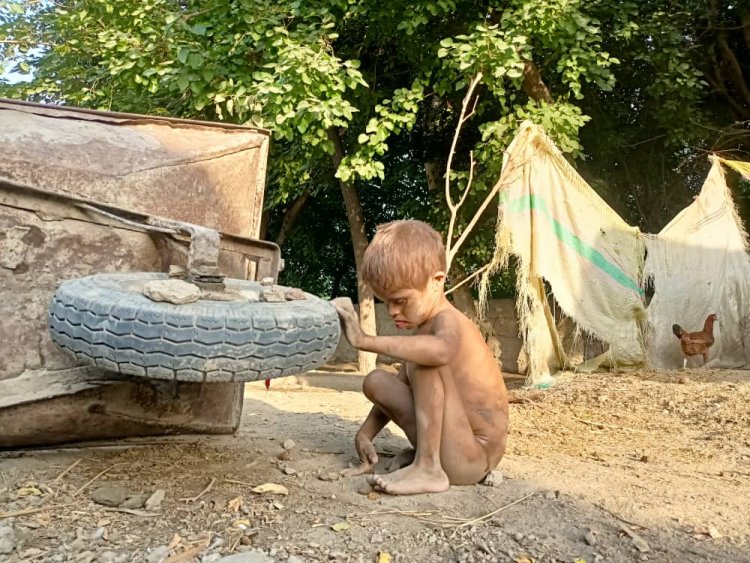Malnutrition and Poverty: The Story of Shazia and Her Son

In a dilapidated house in the north of Kabul, a 30-year-old woman lives a life full of sorrow, holding her small son in her arms. Their frail bodies and protruding bones reflect years of poverty, hunger, and suffering. Shazia’s eight-year-old son, Sudais, is sleeping in her lap, but the mother’s silent tears tell the story of pains that words cannot express. She says, “I have never tasted the sweetness of life; my entire life has passed in hardship and helplessness.”
Shazia, a mother struggling with poverty and malnutrition, represents a vast tragedy that reflects the reality of thousands of Afghan families. She and her son have fallen victim to severe food shortages, and their condition has brought their lives to the brink of collapse. Shazia says they live in a house that is neither theirs nor fit for living — dilapidated, cold, and lifeless.
She explains, “I have been married for ten years. I lost two children at birth because I had little milk. During my pregnancies, our economic situation was so poor that I couldn’t eat enough or nutritious food, which caused health problems for me and malnutrition for my child.”
She adds that after Sudais’s birth, due to her weak body and lack of food, she was unable to properly nourish her child. “I have taken my son to the Kabul Children’s Hospital several times. Doctors insist that the root cause of his poor condition is malnutrition. They say I must provide adequate food. Every month I go to the hospital to receive nutritional supplements, but even with these medicines, our condition has not improved.”
Shazia says her husband worked in the national police during the previous republic regime but lost his job after the political changes. Now he drives a rickshaw, but his income is not enough to buy even dry bread.
With a sorrowful voice, she says, “Most of the time, we have no food. We spend nights hungry. For two days, my husband, son, and I have only eaten dry bread with water. My son says in a faint voice, ‘Mom, when will you cook food in the pot?’ But all I have is silence; I can say nothing else.”
She mentions that some organizations used to help them with food, but those aid efforts have stopped in recent months, making their lives even harder. “Organizations helped us before, but now the assistance has stopped. My husband sometimes cannot even find work to earn enough to buy food. Often he returns home jobless.”
Shazia has borrowed about 60,000 Afghanis from relatives for her and her son’s medical treatment, but now she cannot repay it. No one else lends, and they have nothing left to sell. “May God bless the homes of those who helped us. Relatives assisted with treatment costs, but now no one gives loans, and we have nothing to sell. Debts have increased, economic problems have worsened, and our home situation is deteriorating day by day.”
Shazia’s story is a small example of the great disaster unfolding across Afghanistan. Since the Taliban takeover and the halt of international aid, poverty and hunger have spread throughout the country. Hundreds of thousands of families, especially those headed by women, face severe restrictions on working and providing for their families.
Dr. Sharifullah Zaland, a malnutrition specialist at Kabul Children’s Hospital, says, “Although poverty and economic hardship are the main causes of malnutrition, the roots of the problem run deeper. Lack of vaccination for children, inadequate birth spacing, a weak economy, and natural disasters are primary factors of malnutrition. Heart diseases, diabetes, infections, and other metabolic problems are among secondary factors.”
The United Nations World Food Programme has also expressed serious concern about the hunger and malnutrition crisis among Afghan children. According to their estimates, this year 3.5 million children under the age of five will suffer from severe malnutrition — an increase of half a million compared to last year. Women, children, and returning refugees are the most affected groups.
